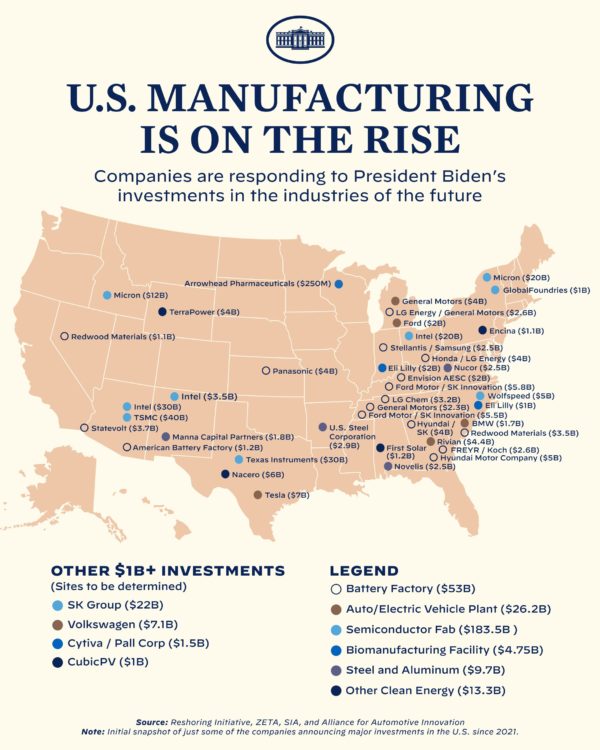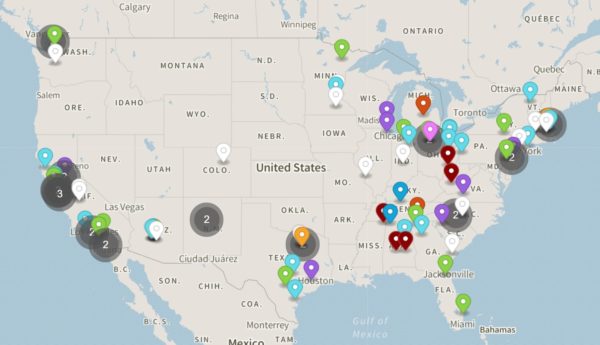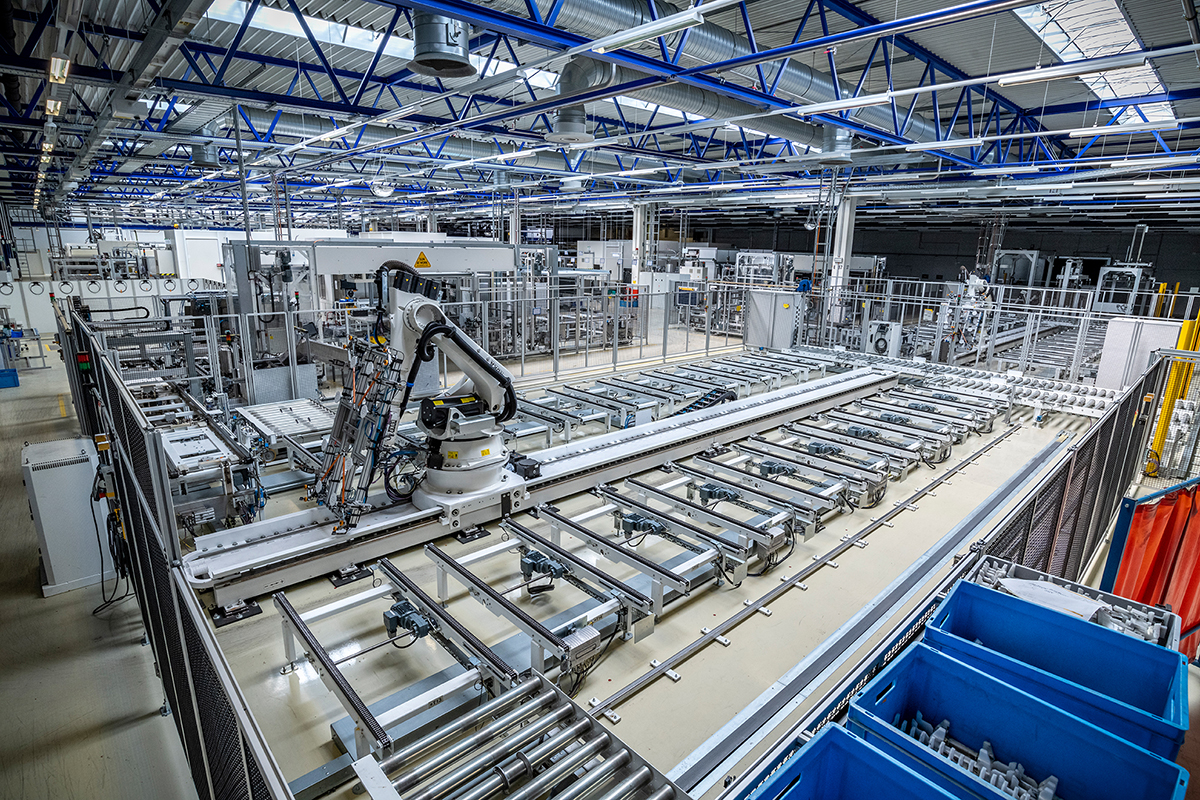Since the signing of the Inflation Reduction Act (IRA), more than ten companies have announced roughly between 50 and 80 GW of solar silicon, wafer, cell, and module manufacturing capacity in the United States. The Solar Energy Industries Association’s roadmap optimistically targets 50 GW of solar module manufacturing capacity. As a result, some analysts see the potential for the USA to emerge as a strong export market for solar panels.
This is hard evidence that just a bit of refined industrial policy – the IRA in this case – can have a massive effect on local business, and national security.

One new development is the participation of solar developers in solar module assembly factories. Their involvement is motivated by the need to secure module capacity, as well to meet the ‘Made in America’ criteria for products. Meeting this criteria is important, because projects that meet the requirement are eligible for the Inflation Reduction Act’s 10% Investment Tax Credit adder.
This is the opposite of what has happened in the past, when module manufacturers like Canadian Solar, First Solar, and Hanwha got into the development side of things.
Here are a few examples of developers that will soon be partnering with manufacturing modules:
Meyer Burger expanded its Arizona facility to 3 GW/year of manufacturing capacity, signing a deal for 3.75 GW of modules from 2024 to 2029 with one of the USA’s largest developers – DE Shaw Renewable Investments. It was specifically noted that DE Shaw will pay a “substantial annual down payment” to help Meyer Burger fund the production capacity required to meet such delivery requirements. The facility – prior to this partnership – had a proposed capacity of 1 GW/year.
It seems that First Solar is investing mainly as a result of being in such high demand. As of Feb. 2023, we believe they are sold out through the end of 2025. The company recently announced a new factory that can manufacture 3.5 GWdc of modules per year, and will come online in 2025. That’s in addition to an expansion of 0.9 GWdc/year at existing facilities.
A few months after the announcement, the company signed a deal – starting in 2025 – for 4.9 GW of capacity over a five year period. That deal would account for 28% of the factory’s output for its first five years.

Active (not planned) solar manufacturing sites. Source: Department of Energy
In 2022, a few months before the signing of the IRA, six solar developers – AES, Clearway Energy Group, Cypress Creek Renewables, and D.E. Shaw Renewable Investments – put out a Request for Proposals for USA based manufacturers of solar modules to supply 7 GW of solar modules per year starting in 2024.
In October 2022, we even saw a solar panel manufacturer, Solaria, merge with a solar installation company, Complete Solar, to form a new company called Compete Solaria. This news was met with disdain by some in the residential solar installation market as access to Solaria’s products was made more complex, but the move makes sense for a residential installation company that wants to lock in high-quality product at a reasonable price.
Even back as far as 2018, we saw the developer-module connection happen when Jinko Solar built a manufacturing facility in Jacksonville, Florida, signing a deal with the nation’s largest renewable energy firm, NextEra, for the entire output of that factory.
Different economic models are driving solar panel manufacturing in the United States than in China, so it is no surprise to see these sort of hybrid relationships developing. Partnerships like these are about more than helping the manufacturing companies finance the factories, they also help energy development firms lock down the modules they need – at a reasonable price, and without the challenges or risks of importing.
This content is protected by copyright and may not be reused. If you want to cooperate with us and would like to reuse some of our content, please contact: editors@pv-magazine.com.








You ani’t seen ANYTHING yet … !!!
Once the US resolves and decides to “lead the world: and usher in a ZERO POLLUTION USA.. then the Floodgates of a 15TW PV Panel market geberatong 18,000TWh/yr will open up to Eliminate Pollution TOTALLY from ALL ENERGY SECTORS.. NOT JUST REPLACING POLLUTING FOSSIL,NUCLEAR etc PLANTS with ZERO POLLUTION SOLAR ENERGY…!!
The USA is really well positioned if it embraces AgriVoltaics (AV) using <100,000km2 (2.5%) of its 4Million km2 of Agricultural Land for the above ZERO POLLUTION EARTH. SS SIMPLE AS THAT..!!!
The USA can get even SMARTER & LEAPFROG ALL.. by Immediate Implementation of The 1992 UN Rio Agreement that POLLUTERS MUST PAY (PMP) for Damages and Sociretal Costs caused by This Pollution by a obal, Uniform, Just & Fair $0.28/KWhe PMP LEVY on the 1O Trillion KWhe/yr of Energy used TODAY.. raising $2.8Trillion/yr. to FINANCE & USHER IN A ZERO POLLUTION EARTH BY 2050 IR EARLIER .. FROM THE $40 TRILLION LEVIED /COLLECTED.. PAID FULLY BY THE POLLUTERS ONLY… and then there is the past 200 years of Environmental Damage too.
[ The $0.28/KWh of PMP Levy comes from the $36.5 Trillion/yr Global Societal Costs of 9 Million Premature Deaths annually ($1Million/Victim) and 275 MillionDALY of Suffering ($100,000/DALY of Suffering) on the 130Trillion KWhe of Energy Used TODAY AROUND THE WORLD].
Yes…. the USA would need A Permanent 500GW/yr PV Panel Industry .. as the 30 year old end-of-life PV Panels get ready for replacement… annually..
YOU AIN'T SEEN ANYTHING .. YET..!!!